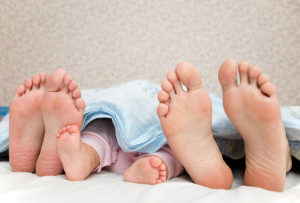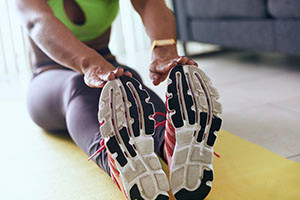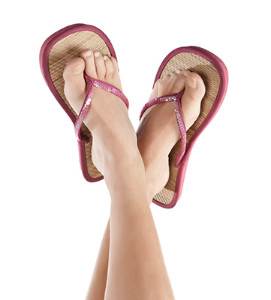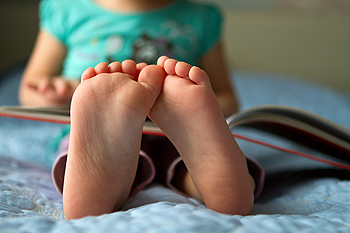 Many people experience painful foot conditions as the aging process occurs. Standing and walking for the majority of the day can put unwanted pressure on the feet, so there are measures that can be taken which may help to prevent foot ailments. These can include wearing shoes that fit correctly, and making sure there is adequate room for the toes to move freely in. When the feet are frequently moisturized, uncomfortable skin conditions may be avoided. Additionally, people who stand for extended periods of time may benefit from performing gentle stretching techniques throughout the work day. Trimming the toenails correctly can aid in preventing ingrown toenails and practicing good foot hygiene can help the feet to feel good. If you would like additional information about proper foot care, it is suggested to consult with a podiatrist.
Many people experience painful foot conditions as the aging process occurs. Standing and walking for the majority of the day can put unwanted pressure on the feet, so there are measures that can be taken which may help to prevent foot ailments. These can include wearing shoes that fit correctly, and making sure there is adequate room for the toes to move freely in. When the feet are frequently moisturized, uncomfortable skin conditions may be avoided. Additionally, people who stand for extended periods of time may benefit from performing gentle stretching techniques throughout the work day. Trimming the toenails correctly can aid in preventing ingrown toenails and practicing good foot hygiene can help the feet to feel good. If you would like additional information about proper foot care, it is suggested to consult with a podiatrist.
While working on the feet, it is important to take the proper care of them. For more information about working on your feet, contact one of our podiatrists from Westside Podiatry Center, LLP. Our doctors will treat your foot and ankle needs.
Working on Your Feet
Standing on your feet for long periods of time can cause stress and pain in your feet. Your whole body may experience change in terms of posture, back pain, bunions, callouses and or plantar warts. There are ways to avoid these conditions with proper foot care, smart choices and correct posture.
Positive Changes
Negative heeled shoe – Choosing this shoe type places the heel slightly lower than the ball of the foot. These are great for overall foot health. Find shoes that fit you correctly.
Go barefoot – Our feet were not designed to be enclosed for all hours of the day. Try to periodically expose your feet to air.
Eliminate Pain
Foot Exercises – Performing simple exercises, incorporating yoga and doing stretches are beneficial. This will allow increased blood flow to the area and muscles of the foot.
Achilles tendon – Stretching the foot out flat on the floor will relax the calf muscles and tendon. These exercises can be performed almost anywhere. Make sure you add these exercises to your daily regimen.
With a little bit of this information and knowing more about foot health, you will notice changes. Foot stretches and proper footwear will help with pain and prevent further issues.
If you have any questions please feel free to contact one of our offices located in Liverpool, Camillus, Skaneateles, Oswego, and Cicero, NY . We offer the newest diagnostic and treatment technologies for all your foot and ankle needs.









